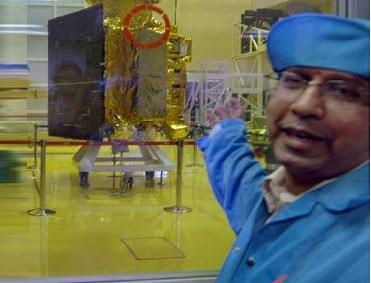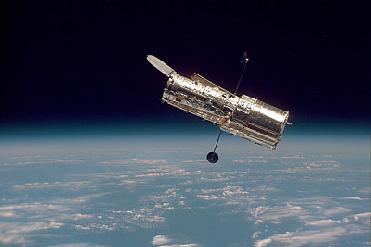
NEW DELHI: As space scientists prepare for India's maiden moon odyssey, the government today approved another lunar mission, which entails landing a rover on the earth's natural satellite.
The Union Cabinet, at a meeting chaired by Prime Minister Manmohan Singh, gave the nod to Chandrayaan-II, which is to be an Indo-Russian mission with a projected launch in 2011-12.
The Cabinet also approved upgrading the associated existing ground segment at a total cost of Rs 425 crore including a foreign exchange component of Rs 293.50 crore, Information and Broadcasting Minister P R Dasmunsi told reporters here.
Scientists are planning to land a rover on the moon for carrying out chemical analysis of the lunar surface and explore other resources there.
"In situ chemical analysis and resource exploration is the main objective of Chandrayaan-II," a scientist associated with the mission said.
India had begun initial technical discussions on Chandrayaan-II, which is expected to be a much shorter mission than Chandrayaan-I scheduled for launch later this year.
An agreement for Chandrayaan-II was signed by Indian Space Research Organisation (ISRO) and Roskosmos, the Russian Federal Space Agency during Prime Minister Manmohan Singh's visit to Moscow in November last year.
Mineral samples from the moon contained Helium 3, a variant of the gas used in refrigerators, and Chandrayaan-II will also look out for the gas which experts believe may offer a solution to energy shortages. The current Chinese moon mission is also exploring this prized source of energy.
Chandrayaan-II will benefit from the country's maiden moon mission, which will survey the lunar surface to produce a complete map of its chemical characteristics and 3-dimensional topography over a two-year period. The survey of the lunar surface will help scientists identify the exact place for landing the rover and strategic locations to carry out experiments.
ISRO recently established a 32-meter diameter antenna at Byalalu near Bangalore for providing tracking and command support for Chandrayaan-I.
The antenna and associated systems are the first steps in building the Indian Deep Space Network (IDSN), which is vital for facilitating a two-way radio communication link between the spacecraft and the earth.
The DSN-32 project will provide ISRO the capability to handle deep space missions besides allowing it to extend cross-support to similar missions by other nations because of its inter-operable features, world standards specifications and state-of-the-art capabilities.
Besides six Indian instruments, the mission is carrying payloads from the US, Germany, France, the UK and Sweden.
"All systems are progressing as per schedule for April 2008 launch," a scientist said.
The first phase will predominantly have remote sensing equipment like X-rays and gamma and laser imaging machines.
The remote sensing satellite will weigh 1,304 kg (590 kg initial orbit mass and 504 kg dry mass) and carry high resolution remote sensing equipment for visible, near infra-red, soft and hard X-ray frequencies.
(PTI)
 Previous Article
Previous Article













The Indian Air Force, in its flight trials evaluation report submitted before the Defence Ministry l..
view articleAn insight into the Medium Multi-Role Combat Aircraft competition...
view articleSky enthusiasts can now spot the International Space Station (ISS) commanded by Indian-American astr..
view article